Here’s an amazing fact: cats can hold their pee for as long as 24 to 48 hours and still stay healthy. In contrast, we humans can hold our pee for only 9 to 10 hours before we end up wrecking our bladders.
But what happens to a cat if they can’t pee for longer than 48 hours? Or what does it mean if they can’t stop urinating again and again?
We’ll be answering these questions and more in today’s article, so read on!
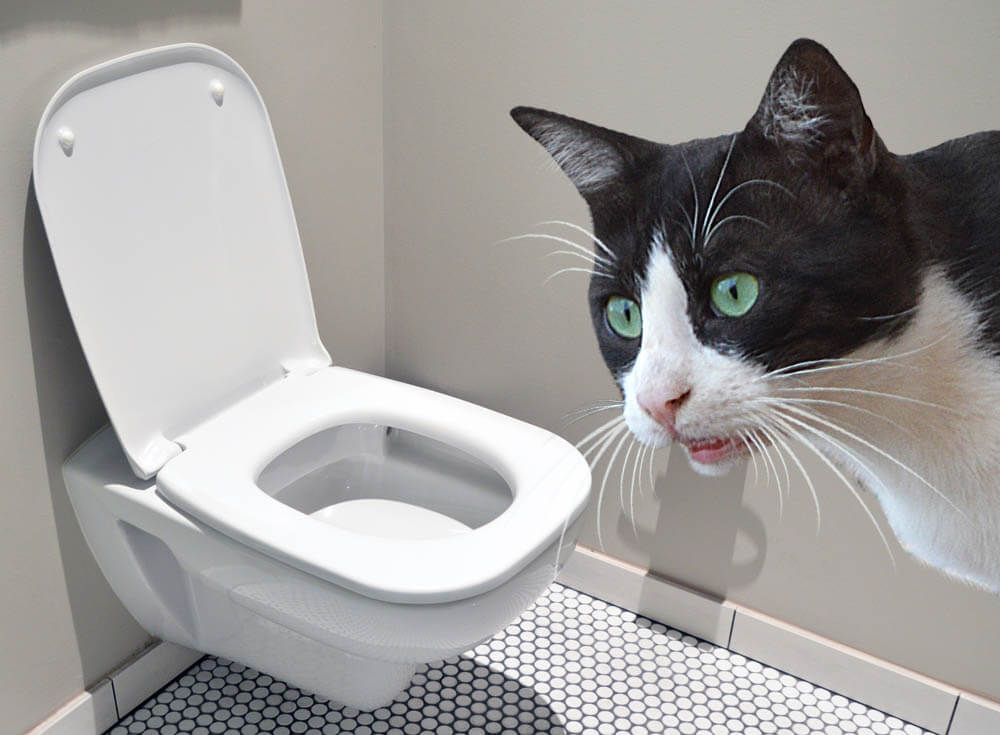
When Cats Hold Their Pee: The Facts
When we say cats can go without peeing for up to 2 days, we mean they can do this without feeling uncomfortable or endangering themselves. They can even hold their pee overnight without compromising their internal health.
However, most cats urinate every 6 to 12 hours – or between 2 and 4 times per day. Depending on their daily water intake, you may see healthy cats pee more or less frequently.
While you shouldn’t panic if your pet hasn’t peed for a day, it’s a good idea to start keeping an eye on them. If you notice any odd behaviors and/or troubling health issue symptoms, seek veterinary assistance.
If it’s been 48 hours and your cat still hasn’t peed, it’s definitely time to contact a veterinarian. Your cat may be suffering from a condition preventing them from emptying their bladder. This is a serious, even potentially life-threatening situation if ignored.
Never let a cat go without peeing for 72 hours. This will most likely kill them.
Kittens and elderly cats typically pee more often, so if such cats are unable to pee for extended periods, it may be a sign of health problems.
With all that in mind, let’s jump into the possible reasons behind a cat’s odd peeing behavior.
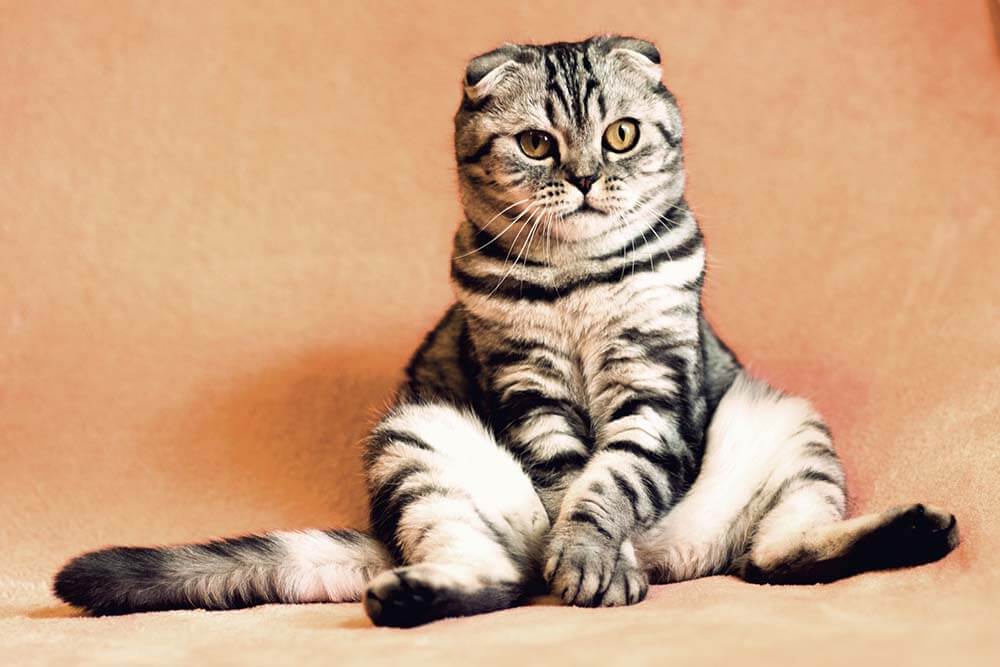
Main Reasons Behind A Cat’s Odd Peeing Behavior
Has your cat been unable to pee for longer than 48 hours? Are they peeing more frequently? Or are they holding their pee on purpose? If your answer to any of these questions is “Yes,” then your cat is displaying unusual, maybe even dangerous peeing behavior.
Here are some of the possible causes behind such behaviors:
1. Urinary tract obstruction
Thick mucus or crystalline substances can obstruct a cat’s urinary tract, preventing urine from leaving the bladder. Urine then accumulates in the cat’s bladder, causing it to expand until it splits open. Bladder ruptures are deadly, which is why it’s best to bring a cat to the vet if they haven’t peed in 48 to 72 hours.
Alternatively, a blockage can lead to a toxin buildup in a cat’s tissues, which can also have fatal consequences if left untreated.
Urethral blockages are more likely to occur in male cats because female cats have far shorter and wider urethras.
In addition to preventing a cat from urinating, the symptoms of urinary obstruction include:
- Straining to urinate
- Bloody urine
- Accidental peeing outside the litter box
- Vomiting
- Reduced appetite
- Lethargy
Urinary blockages have many causes. Among the most common is Feline Lower Urinary Tract Disease (FLUTD), whose symptoms include the above as well as:
- Prolonged and/or frequent urination attempts
- Pain during urination (eliciting distressed vocalization)
- Passing only small amounts of urine despite increased frequency of urination attempts
- Excessive licking of the genital region
A cat’s urinary blockage can also be caused by bladder stones (a.k.a. bladder calculi), cystitis, or urethritis. If you observe any of the above symptoms in your pet, contact the vet immediately and follow any instructions they give you. Your cat will likely need to be brought to the clinic or hospital for emergency treatment.
2. Bladder or urinary tract infection
A bacterial infection affecting a cat’s bladder or urinary tract can cause inflammation in these areas, making peeing difficult or impossible. They may even cause the formation of bladder calculi, which can cause the dangerous urinary blockage issues discussed above.
The symptoms of urinary tract infection are similar to those of urinary obstruction.
Thankfully, urinary tract infections are uncommon in cats.
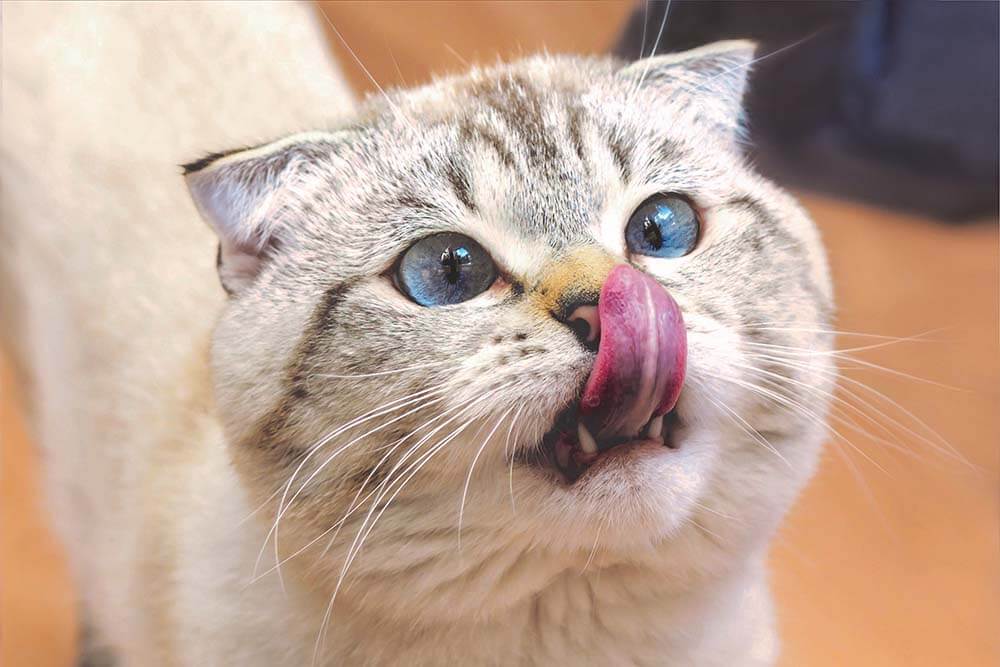
3. Kidney disease
The kidney is involved in many tasks that keep your cat healthy, such as removing waste from the blood, helping manage blood pressure, stimulating the bone marrow to produce more red blood cells, and synthesizing hormones.
For such reasons, untreated kidney disease can cause unhealthy changes in a cat’s body, leading to symptoms such as a significant increase in urination frequency.
Other symptoms include:
- Excessive drinking
- Urinating outside the litter box
- Reduced appetite, leading to weight loss
- Vomiting
- Diarrhea or constipation
- Cloudy or blood-tinged urine
- Indifference and weakness
- A dry coat
- A brownish tongue
- Bad breath that smells like ammonia
- Gum and tongue ulcers
- Bladder or kidney bacterial infection
Acute kidney failure can develop quickly in cats of any age due to toxicity, rapid dehydration, kidney infections, renal blockages, heart failure, or trauma that causes injury to the bladder. This type of kidney problem needs to be treated quickly if its damage is to be reversed.
Chronic kidney problems, which may occur in older cats, are also treatable.
4. Obesity
Overweight cats may experience incontinence, a condition that makes them urinate unintentionally and more frequently.
This unintentional peeing occurs when excess fat presses against the obese cat’s bladder, forcing the urine out.
If your cat is obese, seek veterinary guidance to help them lose weight. This will not only help with the incontinence but also reduce the risk of more serious health issues such as diabetes and liver disease.
5. Stress, anxiety, or frustration
Cats are creatures of habit. They find comfort and safety in adhering to patterns, and as such will develop routines observable to most cat owners.
What happens if your cat’s habits are disrupted? They become stressed, anxious, or frustrated. And sometimes, such mental health issues can make cats hold their pee for longer durations than usual.
A lot of things can lead to psychological distress in your feline friend. Do you forget to feed them on time or keep their litter box clean? Either situation can cause a cat not to pee on purpose until some semblance of routine is reestablished. Other potential triggers include replacing your cat’s litter box, switching your pets’ litter boxes, and ignoring your cat.
Major changes in your cat’s life can also make them hold their pee. Examples include moving the entire family into a new home, introducing a new pet or family member into the household, and renovating the entire house.
If you’re traveling with your feline friend, and you’ve locked them inside a carrier or cage, they may not want to pee until they’ve been released from their enclosure. Cats are particularly hygienic animals and find the idea of peeing or pooping where they lay distasteful. You can try putting your cat’s litter box or an absorbent pad inside the enclosure, but this doesn’t guarantee they’ll relieve themselves.
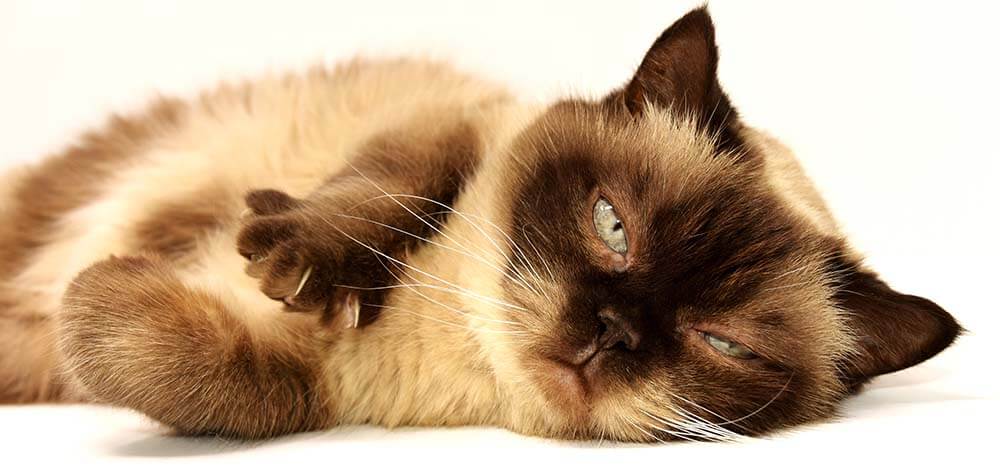
How to Treat Cat-Peeing Problems
Is your cat exhibiting unusual peeing behaviors? There are a few things you can do to help.
Seek a vet’s help
If your cat holds their pee for surprisingly long periods or pees more often than usual, the best thing you can do is contact a pet clinic or hospital. This is especially true if your feline friend displays other troubling symptoms, such as vomiting and pain during urination.
Professionals can provide veterinary advice that will allow you to use home remedies to treat mild problems. If the vet says you should bring your cat to the clinic/hospital, however, do so as soon as possible. Waiting could put your pet at serious risk of experiencing worse problems, maybe even dying.
Various medical conditions can be treated and managed effectively.
For instance, in male cats, a urethral obstruction can be removed via flushing, a catheter, or massages. The vet may also inject a syringe into the bladder to suck out the urine.
If you suspect your cat has a bacterial infection, a vet can diagnose specific urinary problems by administering a bacterial culture. Treatment typically involves antibiotics, urinary acidifiers, fluid therapy, and a modified diet.
Most cats with anxiety issues can be helped using anti-anxiety medication.
Give your cat easy access to water
Every cat owner should ensure their cat has comfortable access to a regular supply of clean drinking water. This will encourage the cat to drink more, which in turn makes them urinate more often.
When cats pee, they expel toxins from their body. Therefore, frequent urination prevents the accumulation of toxins that leads to health problems.
Clean your cat’s litter box
We all know indoor cats poop and pee in their litter boxes. If you don’t clean your cat’s litter box regularly, the nasty buildup of refuse will discourage them from using it, which in turn can encourage them to hold their pee.
If you don’t want your cat holding their pee or peeing in inappropriate places at home, you have to clean their litter tray regularly.
“Ragdoll” your cat
The Ragdoll technique can help your cat relieve themselves.
This simply involves lifting your kitty by the armpits and having their legs hang over their litter box. This encourages them to pee.
If this still doesn’t make your cat pee, you should calm them down by rubbing their back, then gently squeeze or massage their bladder until they release urine. The bladder may be found under the rib cage, in the middle of the body, or near the tail.
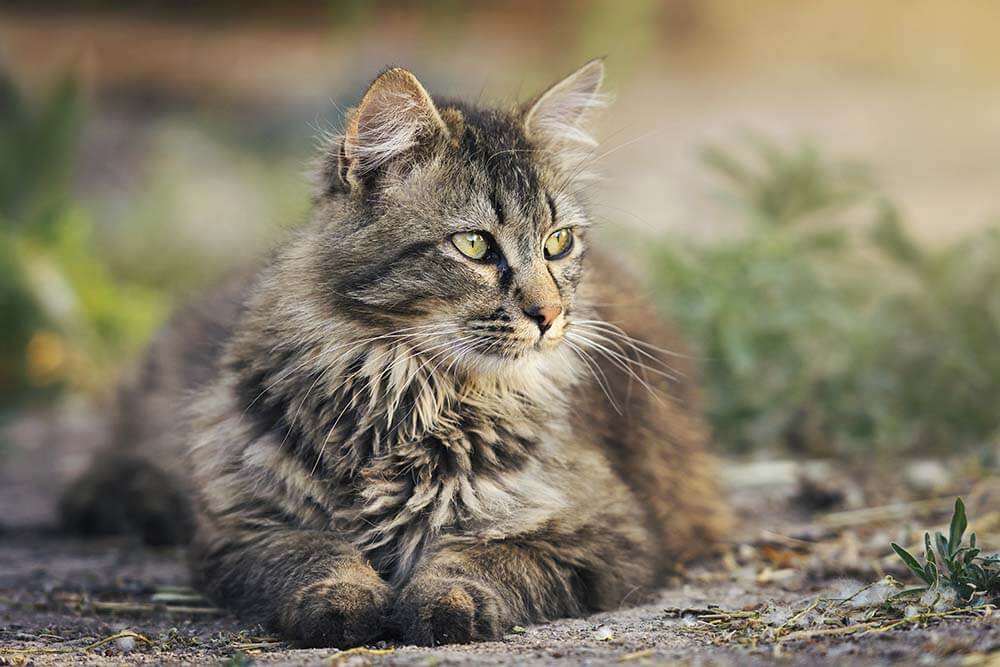
Frequently Asked Questions
Here, we answer other frequently asked questions about cats’ peeing and pooping habits.
How often do cats poop?
On average, cats defecate once a day. Kittens defecate 2 to 3 times per day.
How long can cats go without pooping?
Cats can go without pooping for up to 48 hours. Seek veterinary assistance if your kitty hasn’t pooped in 2 days. They’re likely constipated, which may be a sign of a serious health issue.
Why does my cat pee so often?
Many issues can cause a cat to pee more than usual. We’ve discussed one of them: kidney disease. Other potential problems include hyperthyroidism and diabetes.
Frequent urination isn’t always a sign of a problem, however. For instance, hot weather can make a cat drink more often, so increased urination in this context is natural.
How many litter boxes should I have?
You should have one litter box per cat, plus one extra litter box. So if you own two cats, ensure you have three litter boxes.
How often should I clean my cat’s litter box?
It depends on how many cats use a single litter box and the type of litter they use.
In general, however, you should scoop out the poop daily, and replace clay litter at least twice a week.
Change the litter if it’s clumped, wet, or produces a strong pungent smell. Make sure to scrub the litter box thoroughly every time you replace the litter.
Why is my cat urinating in large amounts?
A condition called Polyuria leads to the production of large amounts of urine, forcing your cat to pee more often. If you suspect your cat suffers from this condition, contact a veterinarian for help.
How do I know when a cat has to pee?
Cats urinate every few hours, and if a litter box is available, they’ll go whenever they have to without your help.
But if your cat has no access to a litter box (such as when you’re traveling), they’ll avoid peeing. If for any reason they can no longer hold it in, they’ll whine loudly to tell you. As such, it’s important to bring portable litter trays every time you travel with your cat.

How Long Can a Cat Hold Their Pee? – The Conclusion!
So, how long can cats hold their pee? An amazing 24 to 48 hours, thanks to enjoying better control over their bladders than humans and other animals! Even if they’ve drunk enough fluids and eaten their meals, they have no problem sleeping without going to the bathroom first.
But if a cat displays odd peeing behaviors, it may be a sign of trouble. Your cat’s health will benefit from your dedication and decisiveness, so don’t hesitate to call a veterinarian if your pet needs help!
